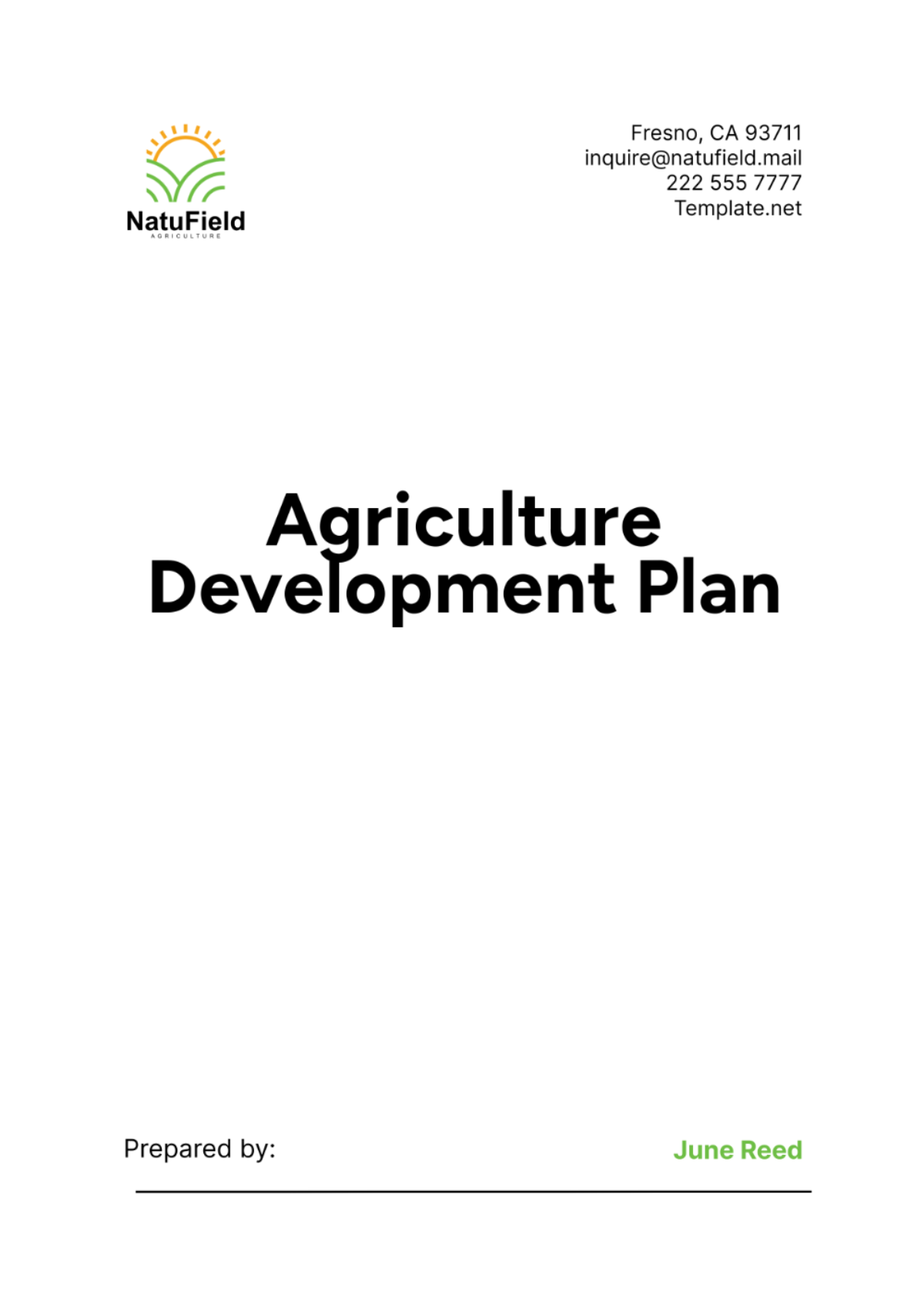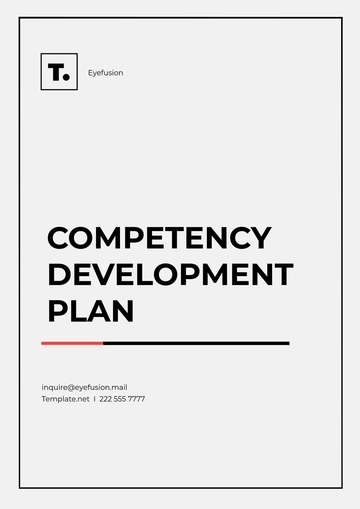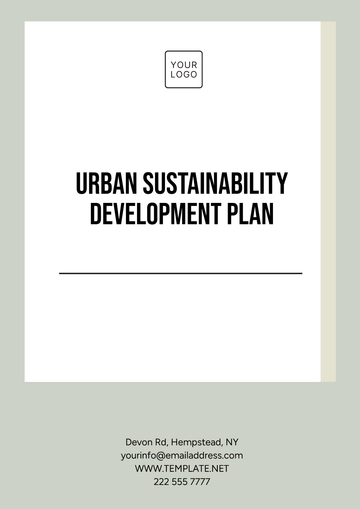Free Agriculture Development Plan

I. Executive Summary
The Agriculture Development Plan for [Your Company Name] centers on sustainable growth and innovation in crop management and agricultural technology adoption. Our primary objectives include bolstering soil fertility through organic practices, integrating precision agriculture techniques for optimal resource utilization, and broadening market presence via strategic partnerships with local distributors and global markets. Over the next three years, we aim to achieve a 20% increase in crop yields while concurrently minimizing our environmental impact. Continuous investment in research and development will propel our trajectory toward regional leadership in sustainable agriculture practices by 2050.
This strategic approach underscores our commitment to sustainable development, aiming to optimize agricultural productivity while preserving natural resources. By fostering collaborations across the agricultural value chain, we seek to enhance resilience against environmental challenges and market fluctuations. Our emphasis on organic farming and precision agriculture not only promotes ecological balance but also positions [Your Company Name] as a pioneer in driving innovation within the agricultural sector. Through these initiatives, we aim to set a benchmark for sustainable agricultural practices, contributing to long-term food security and economic stability in the region.
Looking ahead, [Your Company Name] is dedicated to continuous improvement and adaptation to emerging technologies and market demands. By aligning our goals with global sustainability targets, we strive to establish a resilient agricultural ecosystem that supports local communities and ecosystems while meeting evolving consumer preferences for sustainably produced food.
II. Company Overview
A. Company Information
[Your Company Name] is a pioneering force in the agricultural sector, dedicated to sustainable practices and technological innovation. Founded [Year], we have established ourselves as a leader in [Location/Country]'s agricultural landscape, specializing in organic farming and precision agriculture. Our commitment to quality, sustainability, and community engagement drives every aspect of our operations.
B. Company Mission and Vision
Mission: At [Your Company Name], our mission is to pioneer sustainable agriculture by adopting innovative crop management and advanced agricultural technologies. We are dedicated to enhancing crop productivity while minimizing environmental impact, ensuring the long-term viability of farming practices for future generations.
Vision: Our vision is to become a regional leader in sustainable agriculture practices by 2050. We aim to set new standards in agricultural innovation, promoting ecological balance, and fostering economic resilience within our community and beyond. Through continuous research and strategic partnerships, we aspire to create a thriving agricultural ecosystem that supports both environmental sustainability and economic prosperity.
III. Strategic Objectives
Our strategic objectives focus on enhancing soil fertility, implementing precision agriculture, and expanding market reach. By adopting these goals, we aim to lead in sustainable agriculture by 2050, ensuring efficiency, innovation, and environmental stewardship in every aspect of our operations.
A. Soil Fertility Enhancement
Objective: Enhance soil fertility through organic practices to improve crop yields and maintain environmental sustainability.:
Action | Description |
|---|---|
Implement crop rotation and cover cropping. | Rotate crops annually to improve soil fertility by diversifying nutrient demands and reducing pest and disease buildup. Incorporate cover crops to protect soil structure, suppress weeds, and enhance nutrient retention. |
Adopt organic fertilizers and composting techniques. | Utilize organic fertilizers such as compost, manure, and bio-based products to enhance soil organic matter, improve nutrient availability, and promote long-term soil health. Implement composting to recycle organic materials into nutrient-rich soil amendments. |
Monitor soil health through regular testing and analysis. | Conduct periodic soil testing to assess nutrient levels, pH balance, and microbial activity. Analyze results to adjust nutrient management practices, optimize soil conditions, and ensure sustainable crop productivity. |
Integrate green manure practices. | Incorporate green manure cover crops like legumes and grasses to fix nitrogen, improve soil structure, and add organic matter, enhancing fertility and reducing the need for external inputs. |
Implement biochar applications. | Apply biochar derived from organic waste through pyrolysis to enhance soil fertility by improving nutrient retention, water holding capacity, and microbial activity in the soil. |
Utilize precision nutrient management. | Employ precision nutrient application techniques based on soil testing and crop needs to minimize nutrient loss, improve fertilizer use efficiency, and maintain balanced soil fertility over time. |
B. Precision Agriculture Implementation
Objective: Implement precision agriculture techniques to optimize resource utilization and increase efficiency.
Action | Description |
|---|---|
Deploy satellite and drone technology for crop monitoring. | Utilize satellites and drones to capture high-resolution images and multispectral data of fields. Monitor crop health, detect pest infestations or nutrient deficiencies early, and assess field variability to optimize management practices. |
Utilize GPS-guided equipment for precise planting and irrigation. | Employ GPS-guided machinery and equipment to ensure precise planting of seeds and accurate application of water, fertilizers, and pesticides. Minimize overlap, reduce input wastage, and maximize operational efficiency. |
Integrate data analytics for decision-making on crop management. | Utilize advanced data analytics and machine learning algorithms to analyze historical and real-time data on weather patterns, soil conditions, crop growth stages, and yield variability. Make data-driven decisions to optimize inputs, improve crop performance, and enhance overall farm productivity. |
Implement variable rate technology (VRT). | Utilize VRT to apply inputs such as fertilizers and pesticides at varying rates across a field based on soil and yield maps, optimizing resource use and improving crop yield uniformity. |
Adopt remote sensing technologies. | Integrate remote sensing technologies like LiDAR and hyperspectral imaging to assess crop health, monitor vegetation indices, and detect anomalies, enabling proactive management and timely interventions. |
Establish farm management software systems. | Implement farm management software platforms to streamline data collection, analysis, and decision-making processes. Monitor field activities, track input usage, and generate actionable insights for optimized farm operations. |
C. Market Expansion
Objective: Expand market reach by forging strategic partnerships with local distributors and international markets.
Action | Description |
|---|---|
Identify potential partners and establish collaborations. | Conduct market research to identify potential partners such as local distributors, retailers, and international markets. Initiate partnerships to expand product distribution channels, enhance market presence, and access new customer segments. |
Develop marketing strategies tailored to different regions and markets. | Customize marketing campaigns to align with local preferences, cultural nuances, and regulatory requirements of target regions and markets. Utilize market segmentation strategies to effectively position products, communicate brand value, and differentiate from competitors. |
Leverage digital platforms to promote products and engage customers. | Utilize digital marketing channels including social media platforms, e-commerce websites, and online advertising to raise brand awareness, showcase product benefits, and engage with target customers directly. Implement targeted digital marketing strategies to optimize reach, drive sales, and foster customer loyalty. |
Establish strategic alliances and joint ventures. | Form strategic alliances and joint ventures with complementary businesses and industry stakeholders to leverage synergies, enhance product offerings, and penetrate new markets effectively. |
Implement customer relationship management (CRM) systems. | Deploy CRM systems to manage customer interactions, track marketing campaigns, and analyze customer data for personalized marketing strategies and improved customer retention. |
Conduct promotional activities and events. | Organize promotional events, participate in trade shows, and sponsor industry-related conferences to enhance brand visibility, build industry relationships, and generate leads for business expansion. |
IV. Research and Development
Continuous research and development initiatives will be key to achieving our long-term objectives and maintaining a competitive edge in sustainable agriculture.
Focus Area | Description |
|---|---|
Innovative crop management techniques. | Conduct research on novel crop cultivation methods, including vertical farming, hydroponics, and aquaponics. Explore innovative approaches to enhance crop resilience, optimize yield, and mitigate environmental impact. |
Advanced technologies for precision agriculture. | Invest in research and development of cutting-edge technologies such as AI-driven analytics, IoT sensors, and robotic automation for precise monitoring, data-driven decision-making, and efficient resource management in agriculture. |
Sustainable practices to reduce environmental footprint. | Develop and implement sustainable farming practices such as integrated pest management (IPM), organic farming techniques, and regenerative agriculture to minimize chemical inputs, conserve natural resources, and promote soil health and biodiversity. |
Genetic improvement and breeding programs. | Engage in genetic research and breeding programs to develop crop varieties with enhanced resilience to climate change, improved nutritional profiles, and increased yield potential, ensuring food security and sustainable agriculture. |
Collaboration with research institutions and academia. | Forge partnerships with universities, research institutions, and agricultural experts to collaborate on research projects, share knowledge, and leverage academic expertise for innovative agricultural solutions. |
Pilot testing and validation of new technologies. | Conduct field trials and pilot projects to validate the efficacy and feasibility of new technologies and practices. Gather data on performance, cost-effectiveness, and environmental impact to inform scaling and implementation strategies. |
These focus areas and initiatives underline [Your Company Name]'s commitment to continuous innovation and sustainable development in agriculture. By focusing on research and development, we aim to pioneer advancements in crop management, precision agriculture, and sustainable practices, ensuring long-term viability and leadership in the agricultural industry.
V. Implementation Timeline
This timeline outlines [Your Company Name]'s strategic goals and corresponding activities across short-term, mid-term, and long-term periods to achieve leadership in sustainable agriculture practices and global market expansion.
Timeframe | Goals | Activities |
|---|---|---|
Short-Term Goals (2050-2053) | Enhance soil fertility, initiate precision agriculture trials, and establish initial market partnerships. | Conduct soil health assessments and implement organic farming practices. |
Pilot precision agriculture technologies in select fields. | ||
Identify and initiate partnerships with local distributors and retailers. | ||
Mid-Term Goals (2054-2057) | Scale precision agriculture techniques and expand market presence regionally and internationally. | Expand deployment of precision farming technologies across all farming operations. |
Develop tailored marketing strategies for regional and international markets. | ||
Establish distribution channels and logistics for international markets. | ||
Long-Term Goals (2058 and beyond) | Achieve leadership in sustainable agriculture practices and significantly reduce environmental impact. | Innovate sustainable farming practices and integrate regenerative agriculture. |
Achieve certifications and awards for sustainable farming practices. | ||
Continuously optimize resource use and minimize environmental footprint. |
VI. Monitoring and Evaluation
Regular monitoring and evaluation will be conducted to assess progress towards our objectives and ensure adherence to our sustainable development principles.
Action Steps | Description |
|---|---|
Establish key performance indicators (KPIs) for each objective. | Define measurable KPIs aligned with project objectives, such as crop yield improvement, resource use efficiency, and environmental impact reduction. Track progress regularly to gauge performance and ensure accountability. |
Conduct quarterly reviews and adjust strategies as needed. | Implement a structured review schedule to assess project milestones, KPI achievement, and strategic alignment. Analyze data, identify challenges, and adapt strategies to optimize outcomes and address emerging issues effectively. |
Engage stakeholders in feedback and continuous improvement processes. | Foster open communication with stakeholders including farmers, community members, and project partners. Solicit feedback on project implementation, gather insights, and integrate suggestions to enhance project effectiveness and stakeholder satisfaction. |
Implement data-driven decision-making processes. | Utilize data analytics and monitoring tools to collect, analyze, and interpret project performance data. Make informed decisions based on insights derived from real-time data to drive continuous improvement and operational efficiency. |
Conduct impact assessments and sustainability audits. | Evaluate the socio-economic and environmental impacts of project activities. Conduct regular sustainability audits to ensure adherence to sustainable development principles and regulatory requirements. |
Publish progress reports and communicate findings. | Prepare comprehensive progress reports documenting project achievements, challenges, and lessons learned. Share findings with stakeholders, promote transparency, and demonstrate accountability to foster trust and support. |
These action steps outline [Your Company Name]'s approach to monitoring and evaluating the Agricultural Development Project. By implementing rigorous monitoring, evaluation, and feedback mechanisms, we ensure alignment with objectives, continuous improvement, and sustainable development principles.
VII. Conclusion
The Agriculture Development Plan for [Your Company Name] charts a strategic course towards advancing sustainable agriculture practices. Through initiatives aimed at enhancing soil fertility, deploying precision agriculture technologies, and expanding market influence, we are poised to lead in agricultural innovation by 2050. Our commitment to sustainable growth underscores our dedication to optimizing resource use and minimizing environmental impact. By fostering partnerships and embracing cutting-edge techniques, we aim to set new standards in crop management and environmental stewardship, ensuring a resilient and prosperous agricultural sector for future generations.
Central to our vision is the integration of advanced technologies and sustainable farming practices, ensuring efficiency and environmental responsibility. Through continuous research and strategic partnerships, we seek to pioneer solutions that enhance productivity while preserving natural resources. Our goal is not only to meet current agricultural challenges but also to set benchmarks for sustainable development regionally and beyond. By adhering to rigorous standards and fostering a culture of innovation, [Your Company Name] is committed to shaping a sustainable future where agriculture thrives harmoniously with the environment, ensuring food security and ecological balance for all.
Therefore, the Agriculture Development Plan positions [Your Company Name] as a catalyst for transformative change in the agriculture industry. With a focus on sustainability, innovation, and strategic growth, we are poised to lead by example and inspire industry-wide adoption of responsible agricultural practices. Through collaborative efforts and a steadfast commitment to excellence, we aim to realize our vision of a robust agricultural sector that meets global demands while preserving our planet's natural resources for generations to come.
- 100% Customizable, free editor
- Access 1 Million+ Templates, photo’s & graphics
- Download or share as a template
- Click and replace photos, graphics, text, backgrounds
- Resize, crop, AI write & more
- Access advanced editor
Enhance your agricultural projects with Template.net’s Agriculture Development Plan Template. Fully customizable and editable in our AI Editor Tool, this template streamlines project planning for optimal results. Tailored for marketing professionals, it offers seamless adaptability to meet specific needs. Experience efficiency and precision, ensuring your development plans are both actionable and professionally crafted. Get started today with Template.net.





























